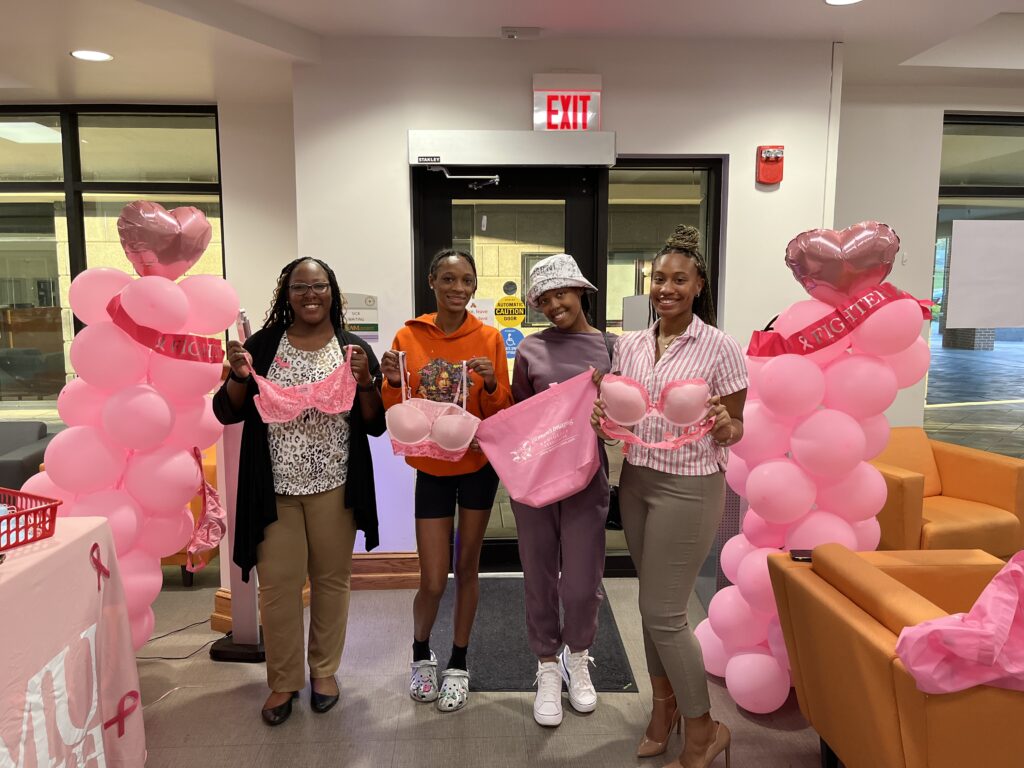
Florida A&M University’s Student Health Services co-sponsored with a Rattler to host a free breast examination for students and the local community on Tuesday.
Kyla Smith, a 4th year pre-physical therapy student from Lakeland, was determined to use her voice to bring awareness to helpful preventative tips for breast cancer.
“Breast cancer ranks as the leading cause of cancer-related deaths among women on a global scale,” Smith said.
“The rising prevalence and mortality rates associated with the disease emphasize how important it is for routine breast screens.”
Dedicating October, which is Breast Cancer Awareness Month, to her late grandma, Smith said, “My nana passed away last November to breast cancer. As a figure of mines, I wanted to promote to others the importance of checking yourself regularly.”
With studies confirming that Black women have a higher mortality rate than white women, it is crucial for Black women to receive annual mammograms to find early signs of cancer cells.
The American Cancer Society reported that “Black women are 41% more likely to die from breast cancer than white women, despite being less likely to be diagnosed with it.”
The ACS report concluded that “socioeconomic differences are linked with having more risk factors for cancer.”
Due to disparities with health insurance, it is difficult for those who are in the lower socioeconomic status to receive preventative health exams, such as a mammogram.
“On average, a digital screening mammogram costs between $144 and $227 without insurance,” GoodRx Health reported.
If an abnormality is found, the follow-up cost is much higher. Therefore, it is important to take advantage of opportunities to receive free breast exams and to be sure to often check for lumps yourself.
Harriet Jennings, a breast cancer survivor, said “she had a noncancerous lump in her breast since she was 17 years old. [She, however,] noticed a new lump in her breast [nearly 40 years later].”
“[Since she often checks herself,] she knew she needed to get the lump looked at. [After the diagnosis,] it concluded to be cancerous. [Nonetheless,] since she caught it early, she did not need radiation, and has now been cancer free for five years.”
A study from the Mayo Clinic reported that “although the breast self-exam technique isn’t always a reliable way to detect breast cancer, a significant number of women report that the first sign of breast cancer was a new breast lump they discovered on their own.”
For best practices, it is important to become familiar with the way your breasts look. Using your eyes and hands, inspect from the bicep area to the area of your breast. This is best done in the shower, mirror, or lying down. To avoid examining your breasts while they may be tender, if you have a menstrual period, perform a self-breast exam a week after your menstrual period.
For additional helpful tips, visit Breastcancer.org.